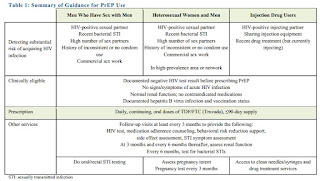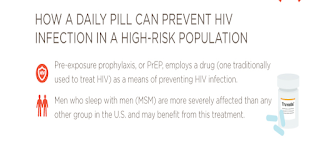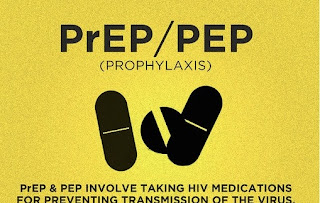Recently the Medical Care Criteria Committee of the New York State Department of Health AIDS Institute updated all three guidelines addressing the vital topic of HIV post-exposure prophylaxis (PEP) for exposures that result from sexual assault,[1] nonoccupational exposure (nPEP),[2] and occupational exposure (oPEP).[3]
In 2012, among other important changes, the preferred regimen was changed to recommend tenofovir (Viread®) plus emtricitabine (Emtriva®) (or lamivudine [Epivir®]) plus raltegravir (Isentress®), in part based on improved tolerability and higher completion rates of the 28-day recommended course for both nPEP and oPEP. With the most recent update in October 2014, dolutegravir (Tivicay®) became an additional choice for the third drug, so the preferred regimen is now tenofovir plus emtricitabine (or lamivudine) plus either raltegravir or dolutegravir.
Historically, adherence to the full 28-day course of PEP had been unacceptably low, with one large meta-analysis showing an overall completion rate of only 56.6%, varying by exposure category from 65.6% in nPEP to as low as 40.2% in cases of sexual assault.[4] Rates of completion for regimens including raltegravir have been reported to be higher relative to previously recommended regimens: 76.3% in one study[5] and 92% in a second study.[6] A substitution of dolutegravir for raltegravir should have identical or greater success given the similar side-effect profile and once-daily dosing, as well as extensive clinical experience showing excellent tolerability of this widely prescribed medication. Nevertheless, education and support throughout the course of treatment is essential, regardless of the regimen, as side effects and discontinuations have been reported even with this better-tolerated combination.[7] Interventions such as adherence counseling and psychological support throughout treatment have been shown to increase completion rates.[8]
Dolutegravir, approved in the United States in August 2013, is, like raltegravir, an integrase strand transfer inhibitor. It has a favorable side-effect profile and has the advantage over raltegravir of once-daily dosing when not used with other potent inhibitors of UGT1A/CYP3A. Raltegravir and dolutegravir are probably equally efficacious when combined with the nucleoside backbone, so the final decision on PEP regimen may depend on factors such as availability and cost. Neither of these drugs has food restrictions, but, importantly, both may be affected by concurrent administration of polyvalent cations such as calcium, aluminum, magnesium, or iron, the first three of which are common ingredients found in over-the-counter antacids. Dosing of antacids should be separated by at least 2 hours before taking the integrase inhibitors and, preferably, up to 6 hours after. There are no contraindications to using proton pump inhibitors with these regimens.[9,10]
- Kidney stones universally present hazard in north india,dillution by water prevent it
- Steroid and placebo effect equally for mild persisting asthma with low sputum eosinophils
- Government wants to fix public healthcare staff shortages with ayush docs: will it work?
- Plea in hc for payment of salaries of edmc, north mcd teachers and doctors
- 7 indian pharma companies named in us lawsuit over inflating generic drug prices
- Woman in up dies after explosion in her mouth during treatment,what is diagnosis?
- Woman in up dies after explosion in her mouth during treatment,what is diagnosis?
- Woman in up dies after explosion in her mouth during treatment,what is diagnosis?
- Air pollution ! mothers organising rally in london,anaesthetist choosing gas,will india follow?
- Cardiac arrest is always not sudden as understood -a study





 Comments (
Comments ( Category (
Category ( Views (
Views (